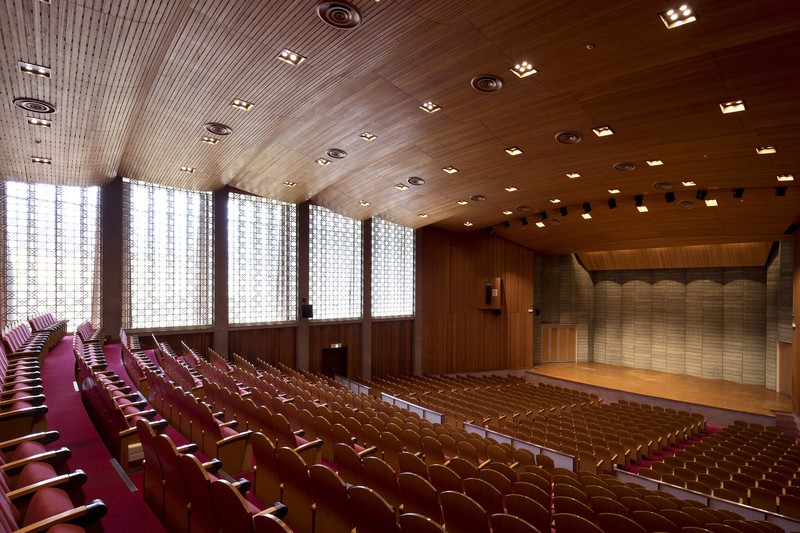Retro Japan: Timeless Sound and Light in Tokyo's University Auditorium

A Timeless Space of Sound and Light
In the heart of Tokyo, nestled on the Ookayama Campus of the Institute of Science Tokyo, stands a remarkable auditorium that has withstood the test of time. This 70th Anniversary Auditorium was constructed using cost-effective materials and innovative methods, making it a unique example of architectural ingenuity. Designed by the esteemed architect Yoshiro Taniguchi, known for his work on the Sento Imperial Palace, the structure was completed nearly seven decades ago.
The construction of the auditorium was made possible through donations from alumni and staff, which led to the use of affordable materials and resourceful building techniques. The site itself is strategically located on a sloped terrain, allowing the design to blend seamlessly with the natural landscape. This integration not only enhances the aesthetic appeal but also contributes to the functional aspects of the space.
Architectural Features and Design Elements
The auditorium's exterior showcases a barrel-vaulted roof, horizontal eaves, and a series of tall, narrow windows. These elements create a harmonious balance between form and function. As one steps inside, the rigid lines of the exterior give way to a soft, curved ceiling that adds a sense of warmth and comfort. The seating is arranged along the slope, creating an intimate setting for performances and gatherings.
At the back of the stage, concrete blocks are curved to enhance the acoustics of the space. This thoughtful design ensures that sound is distributed evenly throughout the auditorium, providing an immersive experience for the audience. The attention to detail in the construction reflects the vision of the architect and the commitment of those who contributed to its creation.
Acoustics and Lighting
Inside the auditorium, the north side features zigzag lauan wood slats, intentionally designed with gaps to improve sound absorption. This feature allows for optimal acoustics, ensuring that every note and word is clearly heard. The tall, narrow windows on the south side also play a crucial role in enhancing the auditory experience, as they allow natural light to filter into the space.
The interplay of light and shadow through the wooden lattices creates a serene atmosphere that can transport visitors to another time. Observing the way light diffuses through the intricate patterns, one can momentarily forget the passage of time and be fully immersed in the beauty of the space.
A Legacy of Innovation
This auditorium stands as a testament to the ingenuity of its designer and the community that supported its construction. The use of inexpensive materials and cost-saving methods did not compromise the quality or functionality of the space. Instead, it resulted in a structure that is both aesthetically pleasing and acoustically superior.
The 70th Anniversary Auditorium continues to serve as a gathering place for students, faculty, and visitors, offering a timeless space for learning, performance, and reflection. Its enduring appeal lies in its ability to blend modern design with traditional elements, creating a unique environment that resonates with all who enter.
Exploring Japan's Architectural Wonders
This article is part of a series that delves into Japan's architectural wonders and the secrets of yesteryear. Each piece highlights the rich history and cultural significance of various structures, offering insights into the design philosophies and construction techniques that have shaped the country's built environment. Through these stories, readers can gain a deeper appreciation for the artistry and innovation that define Japanese architecture.

Comments
Post a Comment